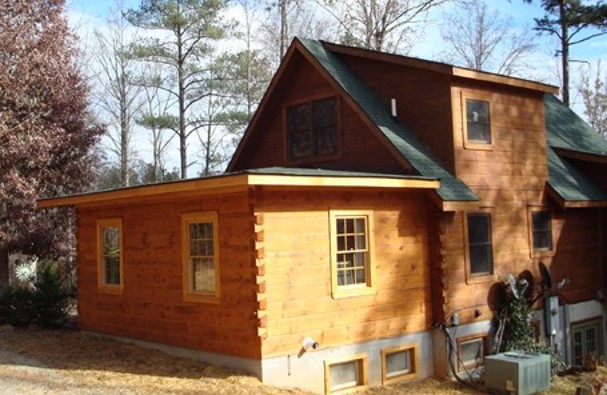
888LogGuys
- Log Home Decor
Adding on to any home takes forethought, adding on to a full-log home can be a challenge. Not only do you need to ensure that the addition looks appropriate and not look like an afterthought, but you also have to guarantee that the log connection will be structurally sound. The key here is to have the design set before construction begins. There are a few important points to consider when planning an addition.
Age:
For starters, the age of the existing log structure could come into play. The log profiles and connectors that manufacturers use today may be different than ones used a few decades ago. Not to mention that the original logs have been exposed to the elements, and the wood will take on the characteristics of that exposure. Matching logs can be a challenge. Your existing walls may have had several years for logs to shrink and walls to settle. Joints between your new logs may initially match those in the existing walls when the addition is finished but be out of place after several years of shrinkage. Its not impossible but can be tricky. You may have to modify your exterior finish a bit to achieve a cohesive look when trying to mesh antique logs with new ones. Another approach could be to use different materials altogether. Board-and-batt, cedar shake and even stone are all great options. The key is to incorporate some of these materials into the finishes of your existing house as well, like on a gable or along the foundation, to tie the whole thing together. This also gives you an opportunity to freshen up the look of the main part of the house.
Roofing:
In any kind of home addition, you need to consider the roof. Pay close attention to where roof loads tie into log walls and make sure that the structure can support it. Additionally, the roofline tie-in areas need to lineup perfectly. Tying-in roofing systems is much more economical as well as less disruptive. While there are a variety of benefits regarding tie-ins, there are also a variety of considerations, such as a higher potential for leaks and noticeable roof line differences. For this reason, some builders and homeowners opt for an all new roof. Keep in mind there will be up-front added expense to the new roof option.
Planning Ahead:
If this is an option, it will be a huge time and budget saver down the road. If you’re in the midst of planning to build a small log home with the goal of adding on in the future, two of the smartest things you can do to prepare is to design that addition as you’re planning your house and dig your foundation footers for that future expansion now. With the footers in place, you won’t have to excavate all the way around your house to tie it into the existing footer (required by code) later on. Plus, the footer for the addition will be uniform and at the right elevation to the existing house when you’re ready to start. Just some food for thought! Another thing you can do in advance is line up your electrical, plumbing and HVAC chases, whether they’re in the subfloor or a second-floor cavity, so that they can be easily connected to the addition when the time comes. And size your electrical panel accordingly: It’s easier to make the panel bigger on the front end than have to retrofit it to meet code later on.
Conclusion:
With proper planning, a professional company and great communications, adding onto your exiting Log Cabin home and be an enjoyable experience with an outcome you love! The team at 888 Log Guys can offer you the experience you’re looking for!








